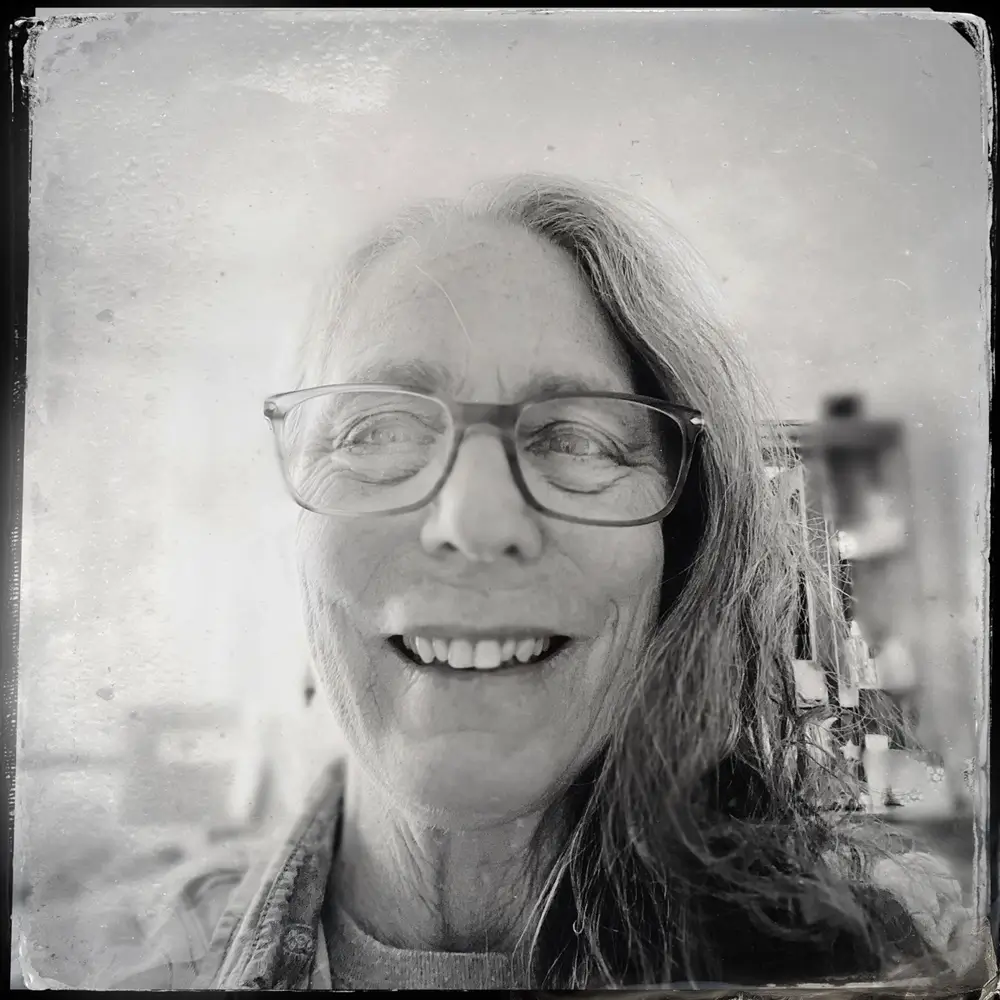Carolyn Moore is a fourth generation Californian, raised in a family of artists and outdoor enthusiasts. Her love of nature is evident in her artwork having spent much of her formative years hiking, swimming, backpacking and enjoying the vast diversity in nature. Equally adept at both music and art, her formal education fell to music. Degrees were completed at University of California Berkeley, University of Oslo and Conservatory of Music, Norway. After a fulfilling and successful career of performance and teaching of flute, percussion and special needs music, her focus since 2005 has turned to visual expression through photography.
Artistic inspiration came early in life when presented with paint brushes and a brownie box camera by her artist father at the age of 7. Mostly self taught, Carolyn has experimented with many photographic techniques - everything from digital, to film based using plastic or pinhole cameras and handmade or lensless processes.
Since 2007 Carolyn has received multiple photographic honors and awards and has been juried into several exhibits at the Soho Photo Gallery, New York. Carolyn has been published in Color Magazine and has participated in multiple solo and collective exhibits both in the United States and Europe. She is currently a member of the Center for Photographic Art and proudly serves as Steering Committee Chair for Image Makers Photographers of Monterey.
My Heart Exposed
Photography to me, represents a composite of my personal feelings, emotions, values and experiences expressed on a canvas. It is as if the artwork is an open window where artist and viewer peer one to the other in a silent exchange.
Images from “My Heart Exposed”, Volume 1, are created in a process that includes entering a meditative state where feelings, intuition and curiosity drive choices made in an experimental photographic process. This process lends an element of unpredictability, and as a result parameters are set for embracing surprises and allowing the image to evolve. The decisions I make are influenced by my innermost feelings and thus, each image presents a visually poetic reflection of my unique story.
My personal story is made all the more poignant by the recent loss of family and intense emotional turmoil of the past year. This chaotic and complicated year of love, loss and strife made maintaining a sense of self a major challenge. I am often reminded of time spent in nature with lost family members, and I cherish the thought of loved one’s hands guiding me in a shared love of nature and an expression that uses plants as an artistic voice. I invite viewers to draw on their own experiences and allow their hearts to embark on a journey of reflection and discovery within each image.
“My Heart Exposed”, Volume 1 are sunshine exposed Lumens with hand painted cyanotype on expired photographic paper. While developing this technique, I have experimented with different types of photographic paper, timing of exposure and elements that change the chemical reaction between plants and paper. Images evolve and change during the development process and I present captures of those stages in unaltered true color. While some images are fixed and will remain stable, others will continue to evolve and eventually dissipate altogether.
